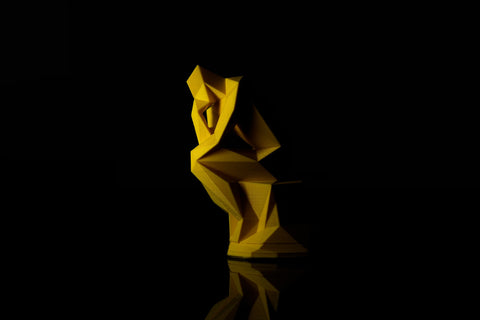Pottery, one of the oldest people’s craft, bridges many generations. It not only keeps the cultural narratives but transforms them over time.
This change is especially evident when the ancient techniques meet digital technologies. The dual narrative of pottery through many centuries clearly demonstrates that despite its age, it is much alive.
Historically, pottery-making has been a slow, almost meditative process, which contrasts the hectic nature of digital reality. The clay, the wheel, and the coils are not just tools but a form of a mindful refuge from the mechanical world. According to practitioners and lovers of this form of art, it is exceptional to shape clay which allows one to silence all unnecessary thoughts and focus on the process.
It may be described as a form of therapy, which requires a tactile experience impossible for digital communication.
On the other hand, the digital era introduces various tools that redesign the pottery as a craft. Although 3-D printing may be perceived as a threat to the traditional pot-making, it only opens new opportunities. Rather than limited, the new technologies expand the boundaries of creativity and allow artists to realize their visions without limits.
By now, booths displaying 3d printed ceramic works are inevitable at pottery fairs, and in comparing myself with other potters, the opinions are often one of skepticism. The fact that people are afraid that they may lose traditions and skills only points to the cultural fear of the unknown. In my opinion the blend of digital and manual technology allows for a new layer of expression of living ideas.
Just as the wheel revolutionized it thousands of years ago, digital molds are just new instruments in the potter’s hands.
From this point of view, pottery is an outstanding symbol of the synthesis of the old and the new in the digital age. It indicates the everlasting need to create, communicate, and connect to the material world or the digital realm.
It is not only a unique relic of the human past but also a mediator between the past, the present, and the future.
I like to think that pottery bridges many realities; offering a chance to embrace innovation without denying tradition.
This change is especially evident when the ancient techniques meet digital technologies. The dual narrative of pottery through many centuries clearly demonstrates that despite its age, it is much alive.
Historically, pottery-making has been a slow, almost meditative process, which contrasts the hectic nature of digital reality. The clay, the wheel, and the coils are not just tools but a form of a mindful refuge from the mechanical world. According to practitioners and lovers of this form of art, it is exceptional to shape clay which allows one to silence all unnecessary thoughts and focus on the process.
It may be described as a form of therapy, which requires a tactile experience impossible for digital communication.
On the other hand, the digital era introduces various tools that redesign the pottery as a craft. Although 3-D printing may be perceived as a threat to the traditional pot-making, it only opens new opportunities. Rather than limited, the new technologies expand the boundaries of creativity and allow artists to realize their visions without limits.
By now, booths displaying 3d printed ceramic works are inevitable at pottery fairs, and in comparing myself with other potters, the opinions are often one of skepticism. The fact that people are afraid that they may lose traditions and skills only points to the cultural fear of the unknown. In my opinion the blend of digital and manual technology allows for a new layer of expression of living ideas.
Just as the wheel revolutionized it thousands of years ago, digital molds are just new instruments in the potter’s hands.
From this point of view, pottery is an outstanding symbol of the synthesis of the old and the new in the digital age. It indicates the everlasting need to create, communicate, and connect to the material world or the digital realm.
It is not only a unique relic of the human past but also a mediator between the past, the present, and the future.
I like to think that pottery bridges many realities; offering a chance to embrace innovation without denying tradition.

